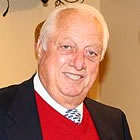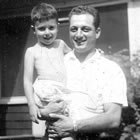| << To Blog Home >> | |
|
|
June 6, 2012 -- 4:10pm EDT What We Can Learn from Tommy Lasorda's "Mild" Heart Attack
Before he was Hall of Fame manager of the Los Angeles Dodgers, Tommy Lasorda was a scout and coach for the team. And part of his duties was to teach the rookies. So, in that tradition, there is a lesson in Tommy's latest health scare: if you think you may be having a heart attack, get to the hospital ASAP, preferably a hospital that performs emergency angioplasty. The news headlines are all calling Lasorda's encounter a "mild" heart attack. But what is important to understand is that one reason the word "mild" can be used is that he got to a hospital, New York-Presbyterian Hospital/Columbia University Medical Center in this case, where the blocked artery causing the heart attack was opened and a stent inserted. Because of this procedure, damage to his heart muscle was minimized. Reports are the 84-year-old Lasorda may be released today -- that's less than 48 hours after his heart attack.
According to Jon Heyman of CBS Sports, when commissioner Bud Selig heard Lasorda complain about not feeling well at the MLB draft Monday night, "Selig insisted Lasorda be taken for testing to a hospital near the Secaucus, N.J., studio where the draft was held. Lasorda was sent from there to New York's Columbia Presbyterian Hospital." Memory is a funny thing and denial is also a strong force. You would think that Lasorda might have remembered this feeling from 1996 when, the day after his final game as Dodgers' manager, he experienced chest pains and drove himself to the hospital -- he was having his first heart attack. So a few lessons to be learned, if you are having symptoms of a heart attack: (1) don't delay getting to a hospital; (2) if you are with someone who seems to be having symptoms, insist that they go to the hospital; (3) try to get to a hospital where there is a catheterization lab (one that performs angioplasty) if within a reasonable distance, and (4) don't drive yourself -- call an ambulance. Unless you're Tommy Lasorda, of course.... Today a growing number of EMS crews are trained to look at EKGs and to activate the nearest cath lab, if the patient is having a myocardial infarction. The times from symptom onset to opening up the artery are getting shorter and shorter -- and this translates directly into survival: less mortality; less morbidity. For more information, read our article, "Surviving Heart Attack: Get Me To The Door On Time!" And for some perspective on how the treatment of heart attack has been radically changed by the use of angioplasty, check out this video of Dr. William O'Neill, one of the pioneers of the treatment of heart attack using angioplasty, and Dr. Ted Feldman of Evanston Hospital in Illinois, discussing how angioplasty "has taken the dread factor out of heart attacks".
So, as a tip of the hat to my favorite subject, "History", here's a photo of Tommy Lasorda from the Eisenhower era, when he was pitching for the Dodger farm team, the Montreal Royals. And his little friend? Yours truly. Tommy was a long-time friend of my dad's and regular visitor to our house. Best wishes for a complete and speedy recovery, Mr. Lasorda! Update: Lasorda was released from the hospital on June 7, less than 72 hours after being admitted! |
|



